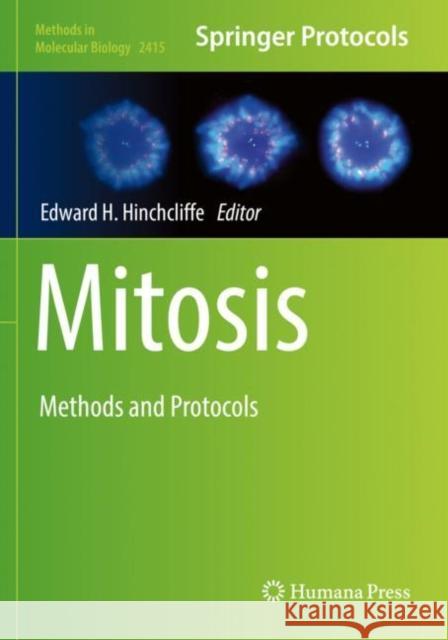Mitosis: Methods and Protocols » książka
Mitosis: Methods and Protocols
ISBN-13: 9781071619063 / Angielski / Miękka / 2022 / 256 str.
Mitosis: Methods and Protocols
ISBN-13: 9781071619063 / Angielski / Miękka / 2022 / 256 str.
(netto: 497,21 VAT: 5%)
Najniższa cena z 30 dni: 501,19
ok. 22 dni roboczych
Dostawa w 2026 r.
Darmowa dostawa!
This detailed volume collects a selection of key techniques for studying cell division, representing multiple model systems and varied scales of approach. Over the past 20 years, a series of revolutions in experimental molecular biology, including chimeric fluorescent protein expression, multiple advanced modes of quantitative microscopy, and array of small molecule inhibitors, proteomic profiling, and gene silencing/manipulation/analysis, has advanced the mitosis field to a point where single cell biology not only allows for imaging/localization studies, but also for quantitative analysis and sequencing. Written for the highly successfulMethods in Molecular Biologyseries, chapters include introductions to their respective topics, lists of the necessary materials and reagents, step-by-step, readily reproducible laboratory protocols, and tips on troubleshooting and avoiding known pitfalls.Authoritative and practical,Mitosis: Methods and Protocolsprovides a repository of techniques and approaches for those working in the field as well as a working resource for those venturing into the study of mitosis for the first time.
This detailed volume collects a selection of key techniques for studying cell division, representing multiple model systems and varied scales of approach. Over the past 20 years, a series of revolutions in experimental molecular biology, including chimeric fluorescent protein expression, multiple advanced modes of quantitative microscopy, and array of small molecule inhibitors, proteomic profiling, and gene silencing/manipulation/analysis, has advanced the mitosis field to a point where single cell biology not only allows for imaging/localization studies, but also for quantitative analysis and sequencing. Written for the highly successful Methods in Molecular Biology series, chapters include introductions to their respective topics, lists of the necessary materials and reagents, step-by-step, readily reproducible laboratory protocols, and tips on troubleshooting and avoiding known pitfalls.











